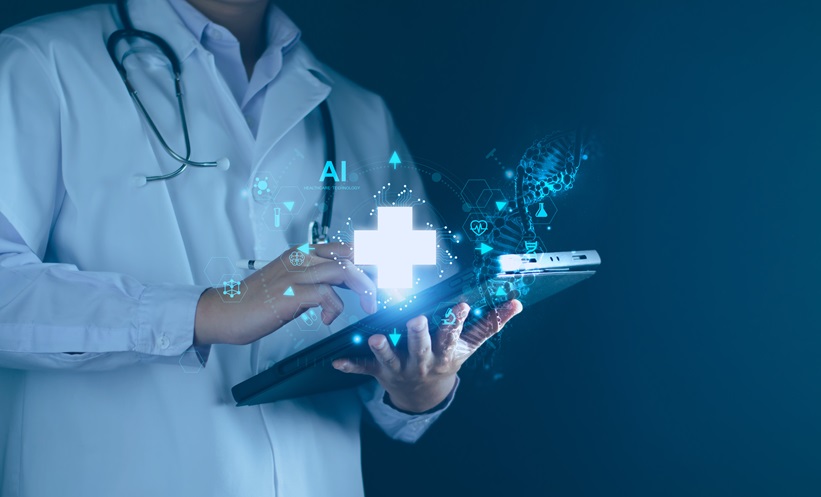Abstract
The use of social media (SM) in healthcare has provided a novel means of communication in line with a more modernised approach to care. For physicians, SM provides opportunities for enhancing professional development, networking, public health, and organisational promotion, among others. For patients, SM provides potential for taking a more active role in health, sharing information, and building virtual communities, especially in the case of chronic and/or rare diseases. SM has the potential to bring patients and physicians closer together, beyond the walls of clinics; however, the interaction between physicians and patients on SM has received mixed feelings, especially from the physicians’ perspective. On the one hand, the potential for a more enhanced, albeit remote, communication has been viewed positively, especially in an era where digital technologies are fast expanding. Conversely, concerns around breaches in professional boundaries and ethical conduct, such as mishandling of patient-sensitive information on these platforms, have fuelled heavy criticism around its use. From this viewpoint, issues arising from the use of SM in healthcare, with a focus on the patient–physician interaction, discussing the potential benefits and pitfalls are covered in this article.
SOCIAL MEDIA USE IN HEALTHCARE
Recent times have witnessed a true revolution in the use of social media (SM), enabling human communication and interaction to take place in ways that go beyond traditional face-to-face interactions. In healthcare in particular, SM has been increasingly used by both professionals and patients as a way to bridge gaps in communication, providing new methods and opportunities for interaction. The ‘traditional’ patient–physician relationship as known from the Hippocratic times1 has shifted through the years, revamping roles and attitudes. Once, patients were passive recipients of health-related information from the physician, whereas the current expectation is that they are active participants in their care. The emphasis on having more holistic consultations in a patient-focussed manner has further enhanced this shift. Parallel to this, evolving digital technologies have shed light into new avenues for delivering care in a more modern way, such as the use of virtual consultations and wards, connecting remote places and people through web cameras and other online technologies.
Reflecting on the two communities separately, physicians on one hand and patients on the other, undoubtedly SM has played a crucial role in how the two parties interact, both personally and professionally.2 For physicians, SM interaction provides opportunities for enhancing professional networking, opinion-sharing, organisational promotion, public health promotion, and education.3 For example, the use of SM platforms, like Twitter and Facebook, to raise disease awareness and contribute to public health are only a few examples of the current common uses of SM. In a survey of young urologists (N=316), 99% reported using SM in a personal and/or professional way, with YouTube and LinkedIn being the most frequently used platforms for professional use.4 This study highlighted the value of SM in urologic education. In the rheumatology community, approximately half of the rheumatologists and basic scientists have reported using SM for clinical and research updates, with other professional uses including the expansion of professional networks and the learning of new skills.5 Beyond education and professional interaction, SM has proved to have a role in pharmacovigilance, enabling monitoring for adverse drug reactions; more specifically, there seems to be increasing interest in the utilisation of vast amounts of available SM data for adverse drug reaction monitoring, from both health-related and also general SM data.6
Patients are becoming increasingly more ‘present’ on SM, particularly those with chronic conditions.7,8 In other words, an increasing number of patients are seen interacting with others on SM platforms, such as online forums, Twitter, and Facebook, showing a remote presence on these platforms. These ‘modern’ patients seek out SM to connect with others, sharing experiences and exchanging health information.9 The formation of virtual online communities not only prevents people from suffering in silence, but often inspires and instils positive energy, even in those less motivated to take a more active role in their care and become advocates of their own health.3 As a result, SM can help improve self-management of chronic diseases, including rheumatic musculoskeletal diseases, although the benefits seem to be particularly evident in the psychosocial management of disease via fostering support and information sharing and less so for physical condition management.10 Furthermore, SM can help enhance the quality and the implementation of recommendations for the management of diseases.11 Finally, from a research perspective, SM is empowering patients in several other ways, including influencing the way clinical research is undertaken as well as patient recruitment into clinical trials.12
The exchange of information on SM can therefore inform, educate, and inspire; the expectation, of course, is that the information provided is accurate and valid. It is not always possible, however, to know and identify who the SM users are, whether who and what they claim to be is real, or whether the information they share is accurate. The freedom of speech on SM, with the potential to reach out to millions of people across the globe, is not without its problems. The possibility to use SM for sharing any kind of information online poses important risks to the health community; the background, knowledge, and intention of the sender can conflict with the understanding and perception of the receiver.
From a physician’s point of view, sitting in clinic listening to long lists of information brought in by patients following an online search either on their condition, treatment, or prognosis, is a recurring scenario. The question relating to this is how much detail can a physician go into, especially during time-restricted consultations, in clarifying, answering, correcting, and relaying information retrieved from the web? Is this feasible and sustainable in routine clinical practice? On the other hand, imagine the scenario of a newly diagnosed rheumatoid arthritis patient who needs to start disease-modifying treatment and who attends the clinic fully aware of the condition, its course and prognosis, and the need for and type of treatment to control it, following their online search. The two scenarios are obviously very different and potentially have a very different approach, impact, and outcome of the patient–physician interaction.
Taking a step further and considering patient– physician interaction on SM platforms and communication beyond the walls of a clinic raises even greater concerns. Violations of professional boundaries and patient confidentiality, with consequent disciplinary actions, have already been reported.11 Compromising patient-sensitive information can lead to social stigmatisation and employment discrimination, among other potential harms.13 The damage can be irreversible. However, whereas building a relationship with your patient in clinic can be strong and deeply personal, continuing to grow this relationship online has been described as: “…less personal than an office visit but more personal than having no contact until the next visit.”3 However, not all patients will have the necessary background and skills for using SM-related technology, and a challenge in this respect is to educate and give the opportunity for this kind of interaction to those less familiar with these technologies (e.g., the elderly, those with no internet access, or with difficulty in reading or writing, etc.). Often, it is this group of patients that is the most vulnerable one in terms of their health.
It is important to maintain clear boundaries between personal and professional relationships and expectations. Reflecting on a study of trainee doctors in France, the need to protect one’s personal information and photographs seems to outweigh the fear of embarrassing the patient or losing their confidence in the context of accepting a friend request from a patient.14 Another study revealed that physician-disclosed personal information in the setting of a face-to- face consultation was unhelpful, and focussed more on the physician’s needs rather than the patient’s.15 This raises the suspicion that physician self-disclosure is likely to be equally unhelpful in online interactions, which, in this setting, typically involve informal chatting that can be intensified by photographs and other highly personal content.14
The realisation that unprofessional use of SM takes place among medical students, ranging from violations of patient confidentiality through to profanity, discriminatory language, depiction of intoxication, and sexually suggestive material,16 highlights the need for education in professionalism beginning at the start of the medical school. It could be argued that professionalism cannot be taught, but at least key principles can, including professional and patient-related boundaries that need to be firmly adhered to, eliminating threats to patient privacy and confidentiality.
Overall, and reflecting on the aforementioned, the authors believe that, if properly used, SM can strengthen patient–physician interaction and keep it in line with modern medical practice. There are certainly ways to remain professional in the digital world, starting from careful review of privacy setting on SM profiles and accounts through to practicing safe SM use and protecting sensitive patient data.17 Despite potential risks, there are positive applications that should not be ignored, especially when it comes to educating and raising awareness on important public health issues; however, lack of awareness on how to use SM seems to be an important reason for not using them4 and it is also likely to be one of the reasons for inappropriate use of SM. Furthermore, online friendships between patients and physicians need to be cautiously considered with existing SM use guidelines and privacy settings in mind.14
CONCLUSION
Despite potential hazards of SM use among healthcare professionals and patients raising concerns around professional boundaries and ethical conduct, SM has largely augmented communication and interaction. In addition, SM has been a strong influence in providing care in a more modern and engaging way. The lack of clear boundaries on the use of SM between patients and physicians poses significant threats to patient confidentiality and invasion of privacy for both parties. Finding a balance in this delicate matter is challenging, but not impossible, and a clear understanding of the rules, at the very least, is necessary.








